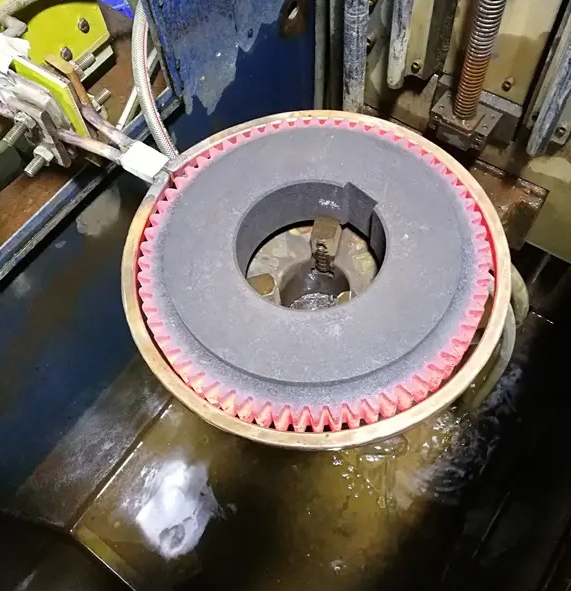- 24
- Jun
How to troubleshoot when high-frequency quenching equipment finds faults
How to troubleshoot when izixhobo ezikhawulezayo zokucima izixhobo finds faults
1. Fault phenomenon The equipment is running normally, but many KP thyristors and fast fuses are burned during the normal overcurrent protection action. In order to release the energy of the smoothing reactor to the power grid during overcurrent protection, the rectifier bridge changes from the rectification state to the inverter state. At this time, if α=150?, it may cause the active inverter to overturn and burn the multiple thyristors and fast fuse. , the switch trips, and there is a huge current short-circuit explosion sound, which produces a large current and electromagnetic force impact on the transformer, which will damage the transformer in serious cases.
2. Fault phenomenon The high-frequency quenching equipment is running normally, but the equipment is unstable near a certain point in the high-voltage area, the DC voltmeter is shaking, and the equipment is accompanied by squeaking sounds. This situation is very likely to cause the inverter bridge to overturn and burn the thyristor. . This kind of fault is more difficult to rule out, and it mostly occurs when a certain part of the equipment sparks under high pressure:
(1) The loose screws of the copper bar joints cause ignition;
(2) Oxidation of the main joint of the circuit breaker leads to ignition;
(3) The screw of the compensation capacitor wiring pile is loose, causing the internal discharge resistance capacitor of the ignition compensation capacitor to ignite the absorption capacitor;
(4) The insulation part of the water-cooled radiator is too dirty or carbonized to the ground;
(5) The induction coil of the furnace body is opposite to the furnace shell furnace. The interval between turns of the induction coil of the furnace body is too close, and the insulating column of the induction coil of the fixed furnace body is ignited due to high temperature carbonization discharge.
- Internal ignition of the thyristor.

